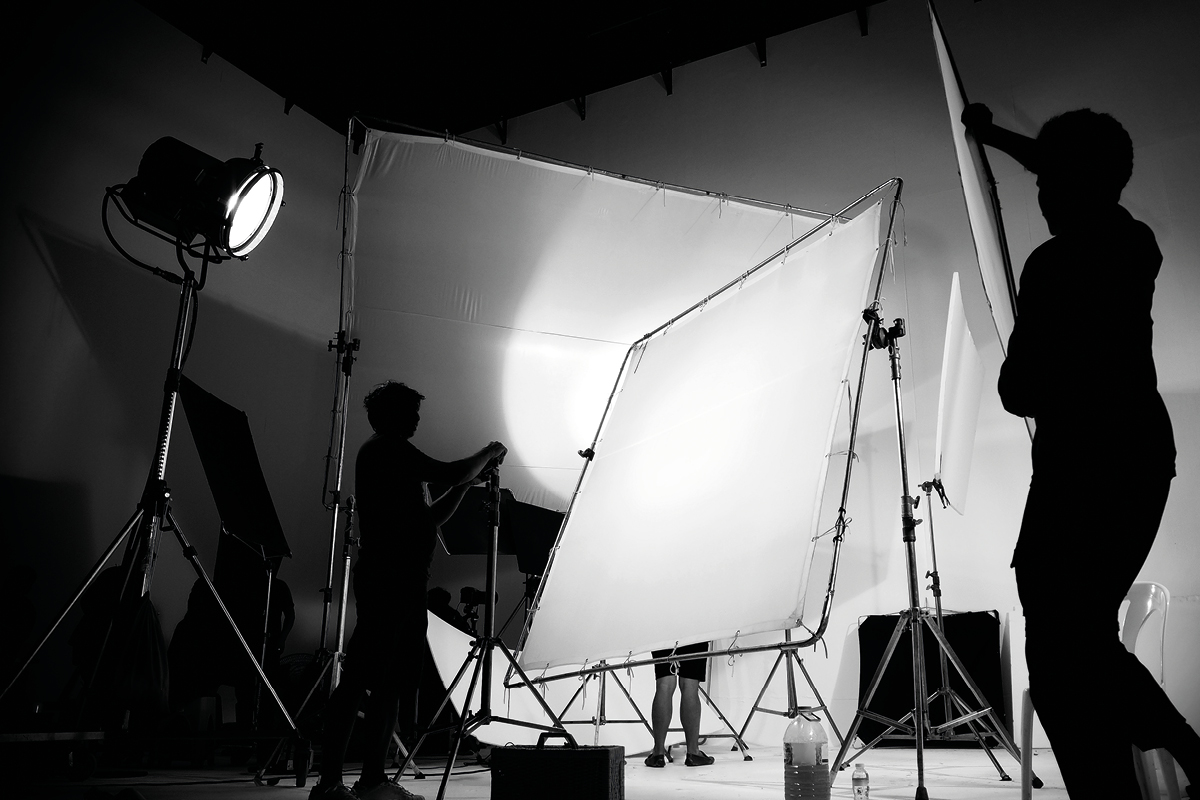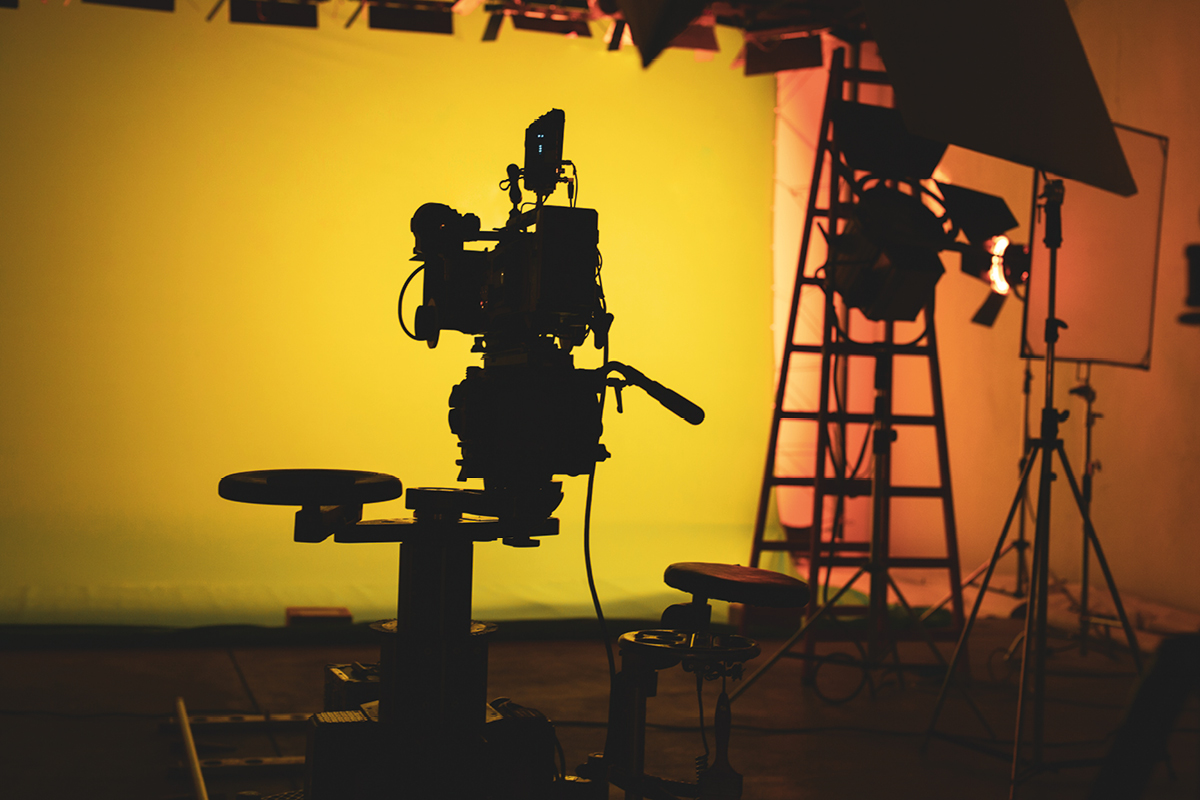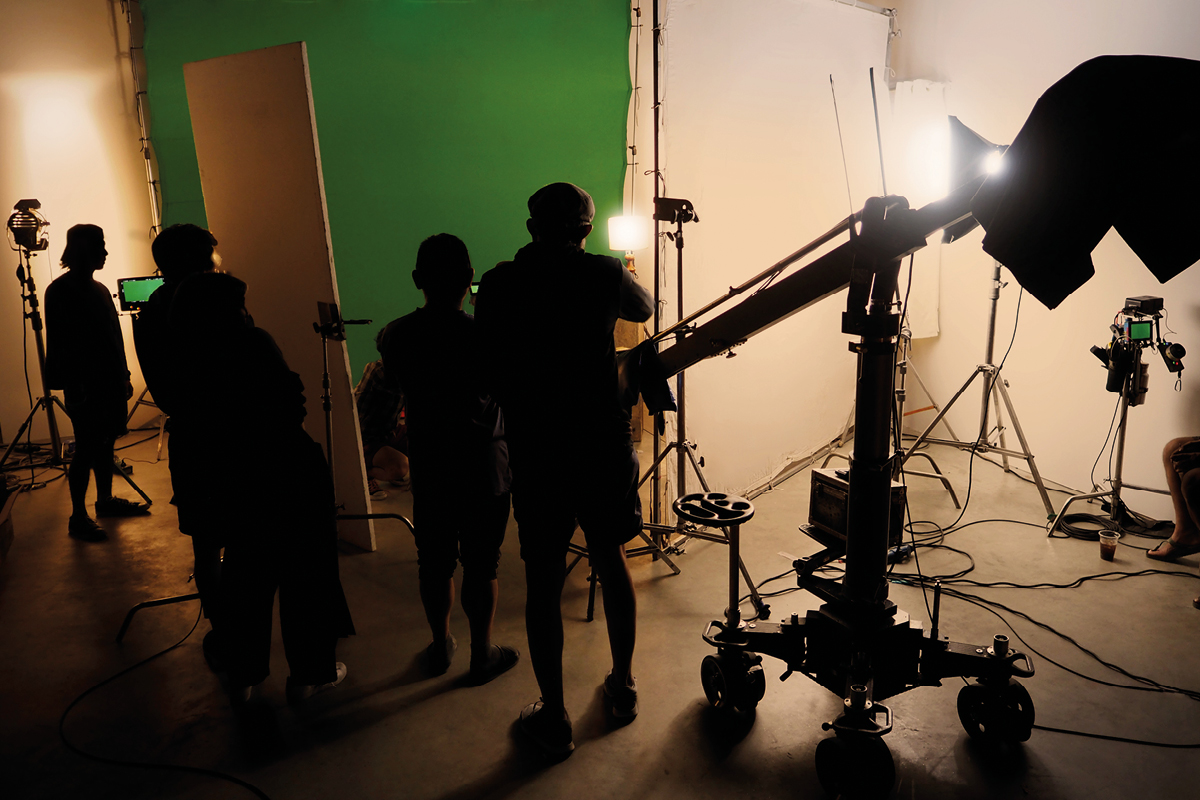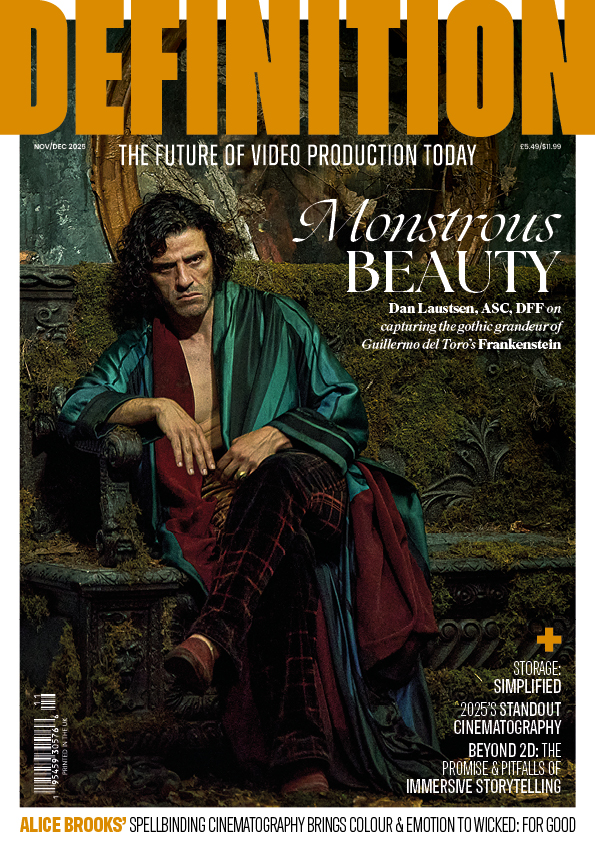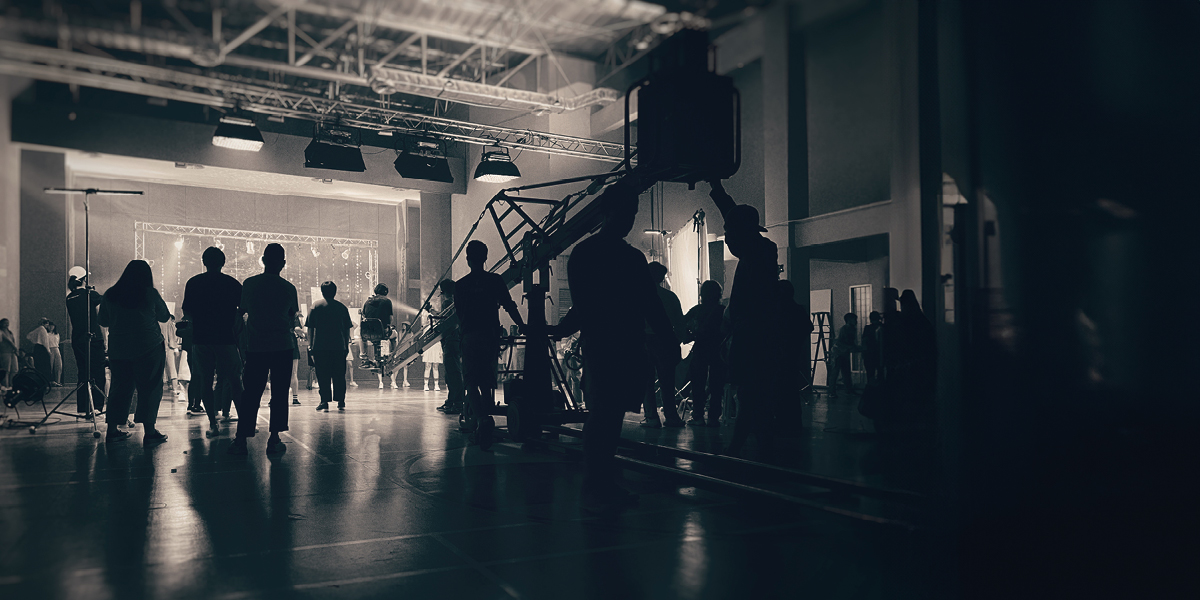
Roundtable: The Future of Lighting
Posted on Jun 5, 2024 by Samara Husbands
A panel of industry experts examine the latest developments and consider what could be next
The Panel
Tim Kang Principal engineer for imaging applications, Aputure
Raphael Kiesel Senior vice president, business unit lighting, ARRI Group
Sascha Jazbinsek Head of innovation, SUMOLIGHT
Dave Amphlett Technical director, Panalux
Definition: From your perspective, what recent advancements in lighting technology do you believe hold the most promise for enhancing film production?
Raphael Kiesel: The efficiency of a production is becoming increasingly important.
Therefore, future lighting solutions must include technologies that increase efficiency for the whole production.
This affects pre-production (eg improving planning with a digital twin), the production itself (eg moving heads) and post-production (eg the availability of lighting fixture metadata).
Dave Amphlett: Lightweight, portable and battery-powered fixtures continue to enable both speed and flexibility in the workflow.
For example, Rodlight’s Spectron Series of inflatable LED tubes are ultra lightweight and feature a CCT range of 2000-20,000K, perfectly embodying these technology advances.
Control and the granularity of the control that fixtures offer also continues to advance.
In particular, pixel mapping and sector control enhance the effects fixtures can produce and allow for subtle, nuanced design opportunities such as cloud effects or colour-temperature graduation.
The scope offered by IP control through networks will be increasingly essential to enable levels of control that aren’t possible with DMX.
Tim Kang: At time of writing, we can now create living and interactive lighting environments, not just simple set-ups.
The most recent advancement in lighting tech is not just new toys, but a new fundamental philosophy and perspective on our craft.
Since co-founding the American Society of Cinematographers’ Motion Imaging Technology Council (ASC MITC) Lighting Committee in 2019, I have advocated for the motion picture lighting industry’s adoption of the CGI rendering lighting technique known as Image-Based Lighting (IBL).
This well-established virtual lighting technique uses calibrated photographic colour information to generate subject and environment lighting. VP popularised IBL as a method to motivate light with LED displays.
I have tried to clarify IBL to the production world to mean: a fundamental lighting philosophy that uses any image, like a pattern painted live or a light card, as a lighting source, and a lighting control methodology that employs an entire environment of lighting fixtures, not merely displays, to generate IBL onto a scene.
Via technical specification research, standards body work participation, public seminars, manufacturer lighting product development and educational training, we have developed clear technical steps to turn lighting fixtures into colour-accurate and video-driven lighting pixels.
Upon this foundation, the entire craft of entertainment lighting can formally shift its mindset from pixel mapping as a live entertainment effect towards physically – and accurately –executing creatively intentional lighting environments and concepts.
Sascha Jazbinsek: IBL, in its broad sense, has yet to reach its full potential. Small studios are continually evolving by combining video walls or back-projection with IBL fixtures.
There appears to be a demand for ICVFX (in-camera visual effects), but to truly cut costs, productions often opt for these smaller set-ups for specific scenes rather than shooting entire movies or TV shows in large VP studios.
I’m confident that many creative individuals will utilise it in ways that will further drive the development of new technologies.
The standardisation of workflows and metrics is making this complex technology easier to use in the future, thus making it more accessible.
Reflective lighting, which is highly popular, has led to a demand for very narrow-beam fixtures, specifically based on modern multi-emitter fixtures.
In the realm of underwater lighting, which is a niche market with limited volume, technological advancements have not yet been widely adopted.
Many fixtures still rely on standard designs housed in waterproof enclosures.
However, we have developed a solution that maintains full functionality underwater without compromising performance.
Also, batteries, particularly large ones, are already impacting productions and will continue to do so. Powerful LED lights exceeding 3kW and having an IP65 rating are on the horizon.

Def: As virtual production continues to gain momentum, how do you envisage lighting technology evolving to meet the unique demands of this approach?
DA: Colour changing, white tracking, remote focus and zoom, control levels to finesse the calibre of the ambient light quality – essentially everything that is required to get across the credibility chasm when working on a virtual set – will all contribute to the ease of operation in these environments.
RK: Besides enabling more creativity, the goal of virtual production is to facilitate efficiency.
To meet the demand of virtual production, lighting fixtures must be integrable in a system, ie together with cameras and LED walls.
The required technologies go hand in hand with the recent advancement for increased efficiency on-set, which is why lighting tech should evolve in this direction.
SJ: As we’ve discovered since we began developing the SUMOSKY system for Image-Based Lighting (IBL) in 2021, synchronising dynamic content with video walls was just the beginning.
There’s still a considerable amount of communication required among stakeholders to fully unlock the potential of this technology.
To bridge this gap, lighting manufacturers must equip primary users such as DOPs and gaffers with tools that enable creative lighting while ensuring consistent colour management throughout the entire production process, from shooting to final grading.
Providing the ability to light by eye and express creativity without needing to grasp the intricacies of post-production workflows is paramount.
Lighting tools should be user-friendly for both colourists and the lighting department alike.
Automating fixture addressing when dealing with numerous fixtures enhances efficiency.
Calibration of light sources is essential; simplifying this further will yield even better results.
TK: Virtual production forced lighting and LED display manufacturers to define and solve the technical requirements for accurately reproducing video colours as light.
Solutions must keep developing to enable both spectrally and colorimetrically accurate lighting environments.
Colour communication standards must be followed by lighting control applications and fixtures alike to ensure the seamless transfer of dreams to photons.
Moreover, just as IBL developed in the CGI world to also describe how photons spatially disperse within virtual spaces to light them, lighting fixture IBL standards and hardware solutions need to follow suit.
Significant development must take place for dynamically controlling a scene’s complete volumetric field of light, not just its spectral composition and colour.
The variables of optical dispersion, fall-off and output angle need a clear communication mechanism for successful control by IBL.

Def: How do you see sustainability playing a role in the future of lighting for film production, and what steps can the industry take to further integrate eco-friendly practices?
RK: Social and environmental responsibility should be supported by everybody.
Besides that, using energy- efficient lighting fixtures decreases the reliance on energy and cost.
Also, the durability, serviceability and long lifetime of products helps to reduce electronic waste.
However, to further push sustainability, stricter regulations are an important lever – as other industries already show.
SJ: Batteries are increasingly prevalent on film sets, both small and large.
They are already replacing diesel-powered generators in many instances; simplifying energy distribution in the process.
The adoption of LEDs has inherently eliminated safety concerns associated with hot fixtures, particularly tungsten fixtures, which predominantly convert electrical energy into heat rather than light.
Additionally, the use of modular rigging systems facilitates the efficient and safe assembly of fixture arrangements. Furthermore, the miniaturisation of lights inherently enhances efficiency across the board.
TK: Lighting requires large amounts of stable power and physical materials to function.
As sustainability laws take effect, legacy products may not necessarily conform to these or other similar sustainability laws worldwide.
Therefore, the lighting industry must continue to invest in significant capital expenditure to re-engineer product technologies that increase output efficiency without trading off spectral fidelity; curb use not only of fossil fuel-based power sources, but also of battery chemistries that don’t destroy the environment during their manufacturing or disposal processes; and create products that use modular designs for long-term reuse and replacement of recyclable components.
DA: Sustainability is important for everyone and is a shared responsibility for production, crew, manufacturers and rental houses.
The use of hybrid generators instead of traditional diesel ones, working with LED sources that offer a lower power draw than traditional tungsten and daylight heads, and a reduction in consumables such as polystyrene all play a part.
At Panalux, we run our full fleet of vehicles and generators using HVO fuel instead of fossil diesel, and our new rental facility in London features a large photovoltaic array on the roof, ensuring a significantly reduced carbon footprint during kit prep.
The use of hybrid generators has a dramatic impact on fuel use and pollution, but their widespread adoption requires buy-in and a change in habits.

Def: What are the primary challenges lighting companies face in meeting the needs of film production professionals?
SJ: Undoubtedly, one of the most challenging aspects lies in the rapid evolution and increasing complexity of technology across all interfaces to lighting instruments.
This includes control systems, colour science, cooling technology and the emergence of new workflows, among other factors, all of which continually demand our attention.
Lighting companies must not only grasp the evolving needs of post-production workflows, which were not as critical in the past, but also possess the expertise and resources to develop comprehensive solutions that integrate complex technologies.
Modern multi-emitter fixtures introduce numerous new use cases, but their impact on the end result, particularly concerning colour matching, is greater than many had initially anticipated.
The abstract, technical layers of lighting have become significantly more intricate. It is imperative that we offer solutions which provide our users with simple-to-control systems.
While users should not be burdened with complex underlying mathematics, they still require some form of assurance that their adjustments will yield consistent results throughout every stage of the post-production process.
TK: Lighting companies are businesses, not charities, so they must still answer to the bottom line of profitability while seeking technological advancements that benefit production professionals.
Often, the race to commodify lighting products to attract customers chasing lower prices leads to a vicious cycle of perpetuating poor technological trends in favour of variables like high output.
Even with proper education efforts, companies struggle to maintain this balance between quality advancement and the bottom line of releasing products at a high pace.
In addition, the pandemic brought years of disrupted supply chains that have increased production costs.
Companies in countries rife with production supplies then have a significant advantage over companies outside of these countries.
Finally, the 2023 labour strikes combined with shifting studio business models severely cut into lighting company revenue streams, and business has only trickled back.
These three challenges therefore strap resources and impede companies’ abilities to meet professionals’ needs.
DA: As a rental business, the transition from traditional daylight and tungsten sources to LED and the huge increase in digital control infrastructure has a significant cost.
Panalux is continually investing in new technologies and lighting systems, ensuring we’re purchasing quality products which support developing user requirements, and guarantee a return on investment for years to come.
Def: How are advancements in lighting technology addressing concerns around operational efficiency and the safety of production teams?
DA: There are a number of new products that can help crews reduce the use of towers and ladders, allowing for changes in fixtures’ position and focus to be achieved remotely.
For example, Litemover enables remote pan, tilt and spot/flood control with a wide variety of fixtures, and the Kosmos LED Fresnel offers wireless control over its motorised zoom, colour output and other features.
RK: Moving fixtures, especially, are improving efficiency and safety at the same time, as set up and changing lighting fixture positioning works without safety risks.
TK: Advancements with LED lighting technology have drastically reduced heat emissions and tied more lighting control variables to remote control.
Both advancements reduced the need for physical lighting changes and thereby reduced lighting technician exposure to dangerous physical working conditions.
For example, remote pan and tilt moving yokes can now rig and aim lighting fixtures atop 15m cranes instead of requiring a set lighting technician to directly sit and babysit lights in a bucket perched precariously at that height for a full 12-hour work day.
Def: Looking to the future, what do you imagine to be the next frontier for lighting products in film production?
SJ: Achieving greater power, brightness and lighter weight will always remain desirable goals.
However, in a broader sense, the transition from larger HMIs to LED lights is still pending.
We also anticipate the emergence of new niche solutions for underwater lighting, Image-Based Lighting (IBL) and specialised reflector systems.
Furthermore, we expect further advancements in automation and control systems to enhance ease of use.
This is an effort across the broad technology spectrum, and stakeholders in professional filmmaking.
This ongoing trend will indeed continue to confront us with technical hurdles that demand innovative solutions.
There is still so much to learn ahead and, personally, I wholeheartedly embrace the opportunity for growth and discovery!
DA: At this point, I believe we’re in a phase of evolution rather than revolution. Incremental improvements will continue to be made, driven by manufacturers keen to differentiate themselves.
There remains a need for a range of large focusable sources with quality optics that will replace larger tungsten and daylight sources in a manageable package – and also contribute to a smaller carbon footprint.
TK: Democratisation and cost reduction of implementing IBL techniques with lighting fixtures will indelibly transform the lighting craft as it currently exists.
With this normalisation, I envision the further convergence of post-production workflows into lighting control.
Therefore, the current position of lighting programmer will transition into being a lighting digital imaging technician (lighting DIT) as the craft further synthesises VFX compositing and colour-grading methods with lighting control tools and networking systems.
This continuing integration will strengthen collaboration across multiple film production crafts, as entire crews approach final pixel sign-off sooner after principal photography due to improved IBL practices.
The roundtable was first published in the June 2024 issue of Definition.


